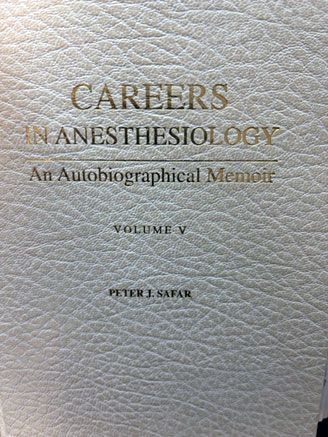Our Mission Statement
The mission of the Safar Center for Resuscitation Research is to identify and promote ever-improving methods to prevent premature death and reduce associated disability from traumatic brain injury, cardiac arrest and other forms of acute brain injury, in people with “hearts and brains too good to die.”
The Safar Center for Resuscitation Research at the University of Pittsburgh School of Medicine was founded by the late Dr. Peter Safar in 1979, initially as the International Resuscitation Research Center. Recognizing Dr. Safar’s innumerable contributions to the field of resuscitation medicine, it was renamed the Safar Center for Resuscitation Research in 1994. The Center’s research programs address the development of therapeutics and diagnostics for acute brain injury across the continuum of care, from the field, emergency department, intensive care unit, rehabilitation, and long-term outcome, and across the age spectrum from infants to the elderly. To achieve its goals, center investigators in the departments of Critical Care Medicine, Neurological Surgery, Physical Medicine and Rehabilitation, Pediatrics, Surgery, Emergency Medicine, Anesthesiology, and others at the University of Pittsburgh School of Medicine and the University of Pittsburgh Medical Center, work closely with investigators in numerous other departments and schools on the Pitt campus, along with a host of national and international collaborators. In addition to conducting basic, translational, and clinical research, Safar Center investigators also train the next generation of resuscitation researchers. The Safar Center is an 11,000 square-foot state-of-the-art research facility located in the Rangos Research Center on the Campus of UPMC Children’s Hospital of Pittsburgh that houses the laboratories of scientists and clinician-scientists working across a broad spectrum of fields important to resuscitation medicine.

The Safar Center was initially founded as the International Resuscitation Research Center (IRRC) in 1979 by Dr. Peter Safar. In the late 1950s, Dr. Safar pioneered the development of the ABCs (airway, breathing, circulation) of resuscitation, including the technique of “mouth-to-mouth” resuscitation, and assembled these techniques, together with others, into what is currently known and implemented as cardiopulmonary resuscitation (CPR). The study and application of additional steps of advanced and prolonged life support led to the development of the concept of cardiopulmonary cerebral resuscitation (CPCR). In the 1970s, Dr. Safar and his associates initiated research into cerebral resuscitation from cardiac arrest, and also initiated “disaster reanimatology” as a field of research.
In 1994, at age 70, Dr. Safar stepped down as director of the IRRC in a desire to transfer leadership to the next generation. Dr. Patrick Kochanek’s first act as new director of the IRRC was to rename the facility the Safar Center for Resuscitation Research in honor of its founder. Dr. Safar was the Distinguished Professor of Resuscitation Medicine at the University of Pittsburgh and an investigator and advisor to the center. Between 1979 and 1998, the multidisciplinary center has trained over 70 physician-scientists.
Digital Version of Peter Safar’s Autobiography made available by the Wood Library-Museum of Anesthesiology
We are pleased to announce that a digital copy of Peter Safar’s Autobiography, Volume 5 of the Careers in Anesthesiology series published in 2000 by the Wood Library-Museum of Anesthesiology is now available free of charge on the Wood Library website:
The original hardcover book version was highly sought after, and all the copies were either promptly distributed by the late Dr. Safar or purchased. The book is a remarkable historical treatise that covers multiple topics of interest including the birth of CPR, the groundbreaking Freedom House Ambulance Service, which represented first Paramedic Service in United States, the origins of the Departments of Anesthesiology and Critical Care Medicine at the University of Pittsburgh School of Medicine, the beginnings of the International Resuscitation Research Center (IRRC), now called the Safar Center for Resuscitation Research at the University of Pittsburgh, and many other topics. It also features details of the incredible life of Dr. Peter Safar.
This wonderful development was initially spearheaded by an inquiry from Dr. Allan Braslow and Virginia Klunder and made possible by Matthew Toland, Director of the Wood Library-Museum of Anesthesiology and Allison Seagram, Wood Library Archivist and Librarian. We are grateful to all these individuals for their efforts to make this historically important book readily available once again.


